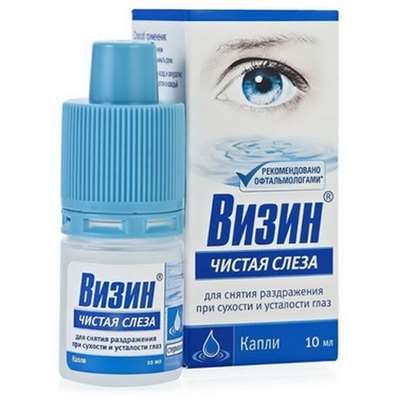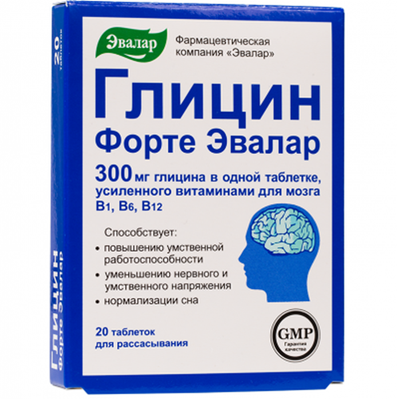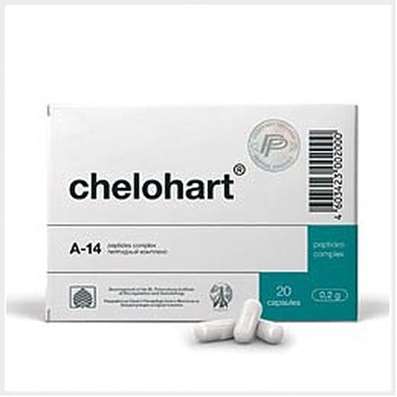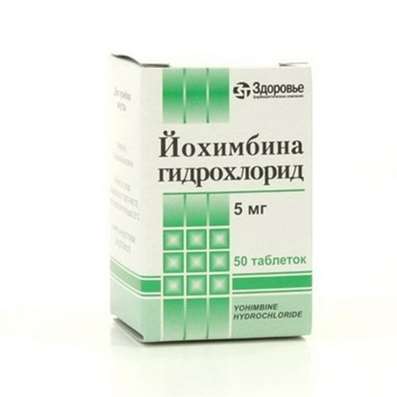Instruction for use: Seduxen
I want this, give me price
Trade name of the drug – Seduxen
Active substance: Diazepamum (genus. Diazepami)
Chemical name: 7-Chloro-1,3-dihydro-1-methyl-5-phenyl-2H-1,4-benzodiazepin-2-one
Dosage Form: solution for injection, tablets
Composition of SeduxenTablets 1 tab.
diazepam 5 mg
excipients: Aerosil; magnesium stearate; talc; corn starch; lactose monohydrate.
in blisters of 10 pieces; in box 2 packaging.
Solution for intravenous or intramuscular administration of 2 ml
diazepam 10 mg
Excipients: methyl parahydroxybenzoate; Propyl; sodium pyrosulfite; sodium citrate; 95% alcohol; glycofurol; propylene glycol; water for injections
in 2 ml ampoules; 5 boxed ampoules.
Description of Seduxen
Tranquilizer from the group of benzodiazepines.
Pharmacotherapeutic group: Anxiolytics
ATX Code
N05BA01 Diazepam
The nosological classification (ICD-10)
A35 Other forms of tetanus: Rabies (hydrophobia); Klostridioz wound; Muscle spasms in tetanus; Tetanus; Tetanus is local; Tetanus.
F09 Organic or symptomatic mental disorder, unspecified: Organic CNS; Pseudo-senile melancholy; Organic psychosis; Endogenous psychosis; Psycho-organic syndrome; Psycho-organic syndrome, senile; Psychoorganic syndrome in the elderly; Psychotic disorders in organic diseases of the central nervous system; Psychoorganic syndrome; Vascular psychosis; Senile pseudo-melancholy; Exogenously-organic psychosis; Endogenous psychosis.
F10.4 abstinent state with delirium: Delirium tremens; Delirium tremens alcohol; delirium; Delirious state in alcoholism and drug addiction.
F10.5Alcoholic psychosis: Alcoholic hallucinosis; Alcoholic psychosis; Delirium tremens alcohol; delirium; Delirium in alcoholism; Delirious state in alcoholism and drug addiction; Acute alcoholic psychosis; Acute alcoholic psychosis with autonomic disorders; Psychoorganic syndrome in chronic alcoholism.
F41.9 Anxiety disorder, unspecified: Severe anxiety; neurosis-like symptoms; neurosis-like disorder; neurosis-like state; Neurosis with anxiety symptoms; Neurosis with anxiety; Neurotic disorders with anxiety syndrome; The acute situational stress and anxiety; The acute situational stress anxiety; Acute anxiety attack; Depressed mood with anxiety elements; Psychopathy with a predominance of anxiety and worry; Sudden anxiety; Situational Anxiety Disorder; An anxiety condition; Soest; Anxious-delirium; Disturbingly delusional component; anxiety; Anxiety; anxiety disorder; Anxiety disorders; Anxiety disorders in neurotic and neurosis-like states; Anxiety syndrome; Chronic neurotic anxiety; Sense of anxiety.
F48 Other neurotic disorders: Neurosis; Neurological diseases; Neurotic disorders; Neurotic state; Psychoneurosis; Anxious-neurotic state; Chronic neurotic disorders; Emotional reactive disorder.
F51.0 Insomnia inorganic etiology: Situational insomnia
F95.9 Tics unspecified: generalized tics; Coprolalia.
G24.8.0 muscle hypertonicity: Painful muscle spasms in spinal diseases; Increased muscle tone; Increased muscle tone; Increased skeletal muscle tone; The spasm of the striated muscles due to organic diseases of the central nervous system; Spasticity of muscles.
G47.0 Disorders of falling asleep and maintaining sleep [insomnia]: Insomnia; Insomnia, especially difficulty falling asleep; desynchronosis; Prolonged sleep disturbance; Difficulty falling asleep; Difficulty falling asleep; Difficulty falling asleep; insomnia; Short-term and transient insomnia; Short-term and chronic sleep disorders; Short or shallow sleep; Violation of sleep; Disturbed sleep, especially in the phase of falling asleep; Infringements sleep; sleep disturbances; Neurotic sleep disturbance; Shallow superficial sleep; shallow sleep; Poor quality of sleep; Night awakening; Night waking; Sleep Pathology; Postsomnic violation; transient insomnia; Trouble falling asleep; Early awakening; Early morning awakening; Early awakening; sleep disorder; somnipathy; persistent insomnia; difficult to fall asleep; difficulty falling asleep; Difficulty falling asleep in children; persistent insomnia; Worsening sleep; Chronic insomnia; Frequent night and / or early morning awakening; Frequent nocturnal awakening and feeling shallow sleep.
G80.0 Spastic Cerebral Palsy: Little's disease; spastic paralysis.
M62.4 Contracture of muscle: Muscle contracture; Neurological contracture with spasms.
O20.0 Threatened abortion: Abortion threatening; Threatening miscarriage; Spastic conditions with the risk of abortion; Threatened abortion; Threatened miscarriage in the first trimester of pregnancy; Threatened spontaneous miscarriage; The threat of termination of pregnancy; The threat of miscarriage.
O60 Premature birth: Pregnancy Prematurity; Immobilization of the uterus; Immobilization of the uterus before the caesarean section; Acute tocolysis; Preventing premature births; Premature discharge of water; Preterm labor pains; Premature contractions prehospital; Childbirth premature; Threatening premature labor; The threat of premature birth.
R25.2 Cramp and spasm: Painful muscle spasm; Mimic spasm; Muscle spasticity; Muscle spasms; Muscle spasms in tetanus; Muscle spasms of central origin; Muscle spasms of; Muscle spasm; Neurological contracture with spasms; Night cramps in the limbs; Night cramps in the legs; Night leg cramps; Symptomatic convulsive state; West syndrome; Smooth muscle spasm; Spasm of smooth muscle; Spasm of vascular smooth muscle; Muscle spasms; The spasm of the striated muscles due to organic diseases of the central nervous system; The spasm of skeletal muscles; The spasms of smooth muscles of internal organs; Muscle cramps; The spasms of skeletal muscles; Spastic condition of striated muscle; Spastic pain; Spasmodic state of smooth muscle; Spasticity of the skeletal muscles; Muscle cramps; Convulsions; Leg cramps; Seizures of central origin; Convulsive state; Spastic syndrome; Convulsive status in children; Tonic seizures; The phenomenon of folding knife; Cerebral spastic syndrome.
R25.8.0 hyperkinesia: hyperkinesia rheumatoid; hyperkinesia trochaic; Hyperkinesia central origin; hyperkinesia; Social tremor.
R45.1 Restlessness and agitation: Agitation; Anxiety; explosive excitability; The internal excitation; Excitability; Excitation; Excitation sharp; psychomotor excitement; hyperexcitability; motor stimulation; Relief of agitation; jitters; restless; Night concern; The acute stage of schizophrenia with excitement; Acute mental stimulation; paroxysm excitation; overexcitement; erethism; Increased nervous irritability; Increased emotional and cardiac excitability; Increased arousal; hyperphrenia; Psychomotor agitation; Psychomotor agitation; Psychomotor agitation in psychosis; Psychomotor agitation epileptic nature; psychomotor paroxysm; psychomotor seizures; excitation Symptoms; The symptoms of psychomotor agitation; Status agitation; Status anxiety; excitation condition; Status of high concern; Condition of psychomotor agitation; anxiety states; excited states; anxiety states with somatic diseases; feeling of excitation; Feeling restless; Emotional arousal.
Z100 CLASS XXII Surgical practice.
Pharmacological Properties of SeduxenPharmachologic effect
Mode of action - an anticonvulsant, anxiolytic, muscle relaxant, sedative.
It has a regulating effect on the neurovegetative functions, reduces nocturnal gastric acid secretion.
Pharmacokinetics
Well absorbed. Cmax in plasma attained at 90 min. Binding to plasma proteins - 98%. Penetrates through the placenta into the cerebrospinal fluid is excreted in breast milk.
It is metabolized in the liver. Excreted by the kidneys (70%).
Indications for Seduxen
Neuroses of all kinds, as well as nevrozo- and psycho-like state with anxiety syndrome at endogenous diseases, organic brain damage (including cerebral arteriosclerosis); mental illness, accompanied by restlessness, agitation, severe anxiety; nervous tension, anxiety, psychosomatic diseases, endogenous psychosis (as an adjuvant); status epilepticus, expressed, often recurrent seizures (parenteral administration); epilepsy (as an adjuvant, including for mental equivalents); state of anxiety that accompanies diseases of internal organs; neurotic disorders in pediatric patients (anxiety, headache, insomnia, enuresis, stubborn reaction, teak, bad habits); cramps, muscle stiffness, contractures; diseases accompanied by increased muscle tone, spasticity and hyperkinesis; eclampsia; tetanus, and all types of convulsive states; premedication before surgery; induction of anesthesia, premature delivery or the threat of premature birth due to muscle spasm (only at the end of III trimester).
Contraindications for Seduxen
Myasthenia gravis, acute attack of glaucoma, angle-closure glaucoma, pregnancy (I trimester), children's age (up to 6 months.) Contraindicated during pregnancy. In the appointment during breastfeeding should be careful.
Seduxen Dosage and Administration
Inside, in / in, in / m.
Pills. Dose it selected individually, thus it is necessary to take into account how the patient's condition and response to treatment - only general guidelines are given below. At the start of therapy it is recommended to use small doses of the drug with their gradual increase. Share the daily dose to 2-4 receive necessary individually. It is advisable to take 2/3 of the daily dose in the evening.
For adults, neurological disorders, psychosomatic disorders, anxiety and phobic disorders: conventional single dose - 2.5-5 mg (1 / 2-1 table.). The average daily dose for adults - 5-20 mg.
A single dose should not exceed 10 mg.
Symptomatic treatment of seizures: usually 2.5-10 mg (1 / 2-2 table.) 2-4 times a day.
In the complex treatment of mental disorders of organic origin: initial dose - 20-40 mg (4-8 table.) Per day, the daily maintenance - 15-20 mg (3-4 tablets.).
Muscle contraction, spasticity, rigidity - 5-20 mg (Table 1-4.) Per day.
In elderly and cachectic patients, as well as reducing the liver excretion seduksen can significantly lengthen. It is recommended to start treatment with lower (approximately half) dose, which can be gradually increased, taking into account the individual tolerance of the drug.
The dose for children should always be determined individually according to age, level of physical development, general condition and response to treatment. The initial dose for children - 1.25-2.5 mg / day, divided into 2-4 reception. This dose can be reduced or increased, taking into account the individual response to therapy.
Children under 6 months of use of anxiolytic agents from the group of benzodiazepines is not allowed.
Solution in / and the / m. It is forbidden to enter extravasal (except / m) in the arteries! Enter deep into the muscle with a / m application. The vein administered slowly, no more than 5 mg (1 ml) of the drug for 1 min, since rapid injection can cause sleep apnea. Children are very slow: more than 3 minutes.
Due to the presence of significant individual differences in response to drug treatment should be started with the lowest effective dose and gradually increase it until you reach the lowest effective and at the same time sufficiently tolerated dose.
Relief of agitation, anxiety flowing - 10-20 mg / m, in severe cases - in / in, if necessary - to 10 mg 3-4 times a day.
Alcohol withdrawal, delirium, condition occurring with increased muscle tone - less than 10 mg 3-4 times a day / m.
When tetanus - 10-20 mg / m or / in (including infusion) every 2-8 hours depending on the clinical picture.
When status epilepticus - initial dose - 10-30 mg / in which can be repeated after 0.5-1 hours, then after 4 hours, maximum daily dose -. 80-100 mg. After the cessation of seizures can move to / m administration (10 mg every 4-6 hours, if necessary - for a few days).
To remove the skeletal muscle spasm - for 0.5 hours before the operation - not more than 10 mg / m.
Infants older than 5 weeks (over 30 days) - at 0.1-0.3 mg / kg body weight / in, slowly. The maximum dose of - 5 mg. If necessary, depending on the clinical picture, 2-4 h injection can be repeated, however, the introduction of more than three injections per day is permissible only in the case of status epilepticus and tetanus. Except for absolute indications - epilepsy, tetanus - use of the drug for children under 6 years of age is not recommended due to age characteristics of the distribution, metabolism and safety of use.
Children over 5 years - 1 mg / in every 2-5 minutes up to a maximum dose of 0.2 mg / kg (in convulsions - 0.3 mg / kg), if necessary after 2-4 hours, the treatment can be repeated. With frequent epileptic seizures and status epilepticus dose of the initial dose - 2-10 mg / in, then after 0.5-1 hours, then - after 4 hours, the dose can be repeated. Administering more than 3 injections per day is permissible only in the case of status epilepticus and tetanus.
Side effect of Seduxen
From the nervous system: at the beginning of treatment may be fatigue, somnolence (disappear spontaneously or with a decrease in dose). Rarely - ataxia; in some cases - paradoxical reactions (excitement, anxiety, sleep disorders).
Interaction
Potentiate the effects of tricyclic antidepressants, drugs that have a depressant effect on the central nervous system, muscle relaxants (Caution should be exercised when used together).
The solution seduxen incompatible in the same syringe with any other drugs.
Overdose of Seduxen
Symptoms: drowsiness, confusion, coma, depression of reflexes.
Treatment: gastric lavage, mechanical ventilation, measures aimed at increasing the blood pressure.
SPECIAL INSTRUCTIONS for Seduxen
Against the background of Seduxen strictly prohibited the use of alcohol.
In the case of long-term use may develop drug dependence.
Do not abruptly stop treatment because of the risk of withdrawal symptoms.
With the rapid parenteral administration of the drug may decrease blood pressure, respiratory disorders.
At the beginning of the application is not recommended to engage in activities that require increased attention and rapid psychomotor reactions; in the future, these limits are determined individually.
Storage conditions of Seduxen
In the dark place at a temperature of 8-15 ° C.
Keep out of the reach of children.
Shelf life of Seduxen
solution for intravenous and intramuscular administration of 10 mg / ml 2 - 3 years.
5 mg tablets - 5 years.
Do not use beyond the expiration date printed on the package.
Conditions of supply of Seduxen from pharmacies
On prescription.

 Cart
Cart





